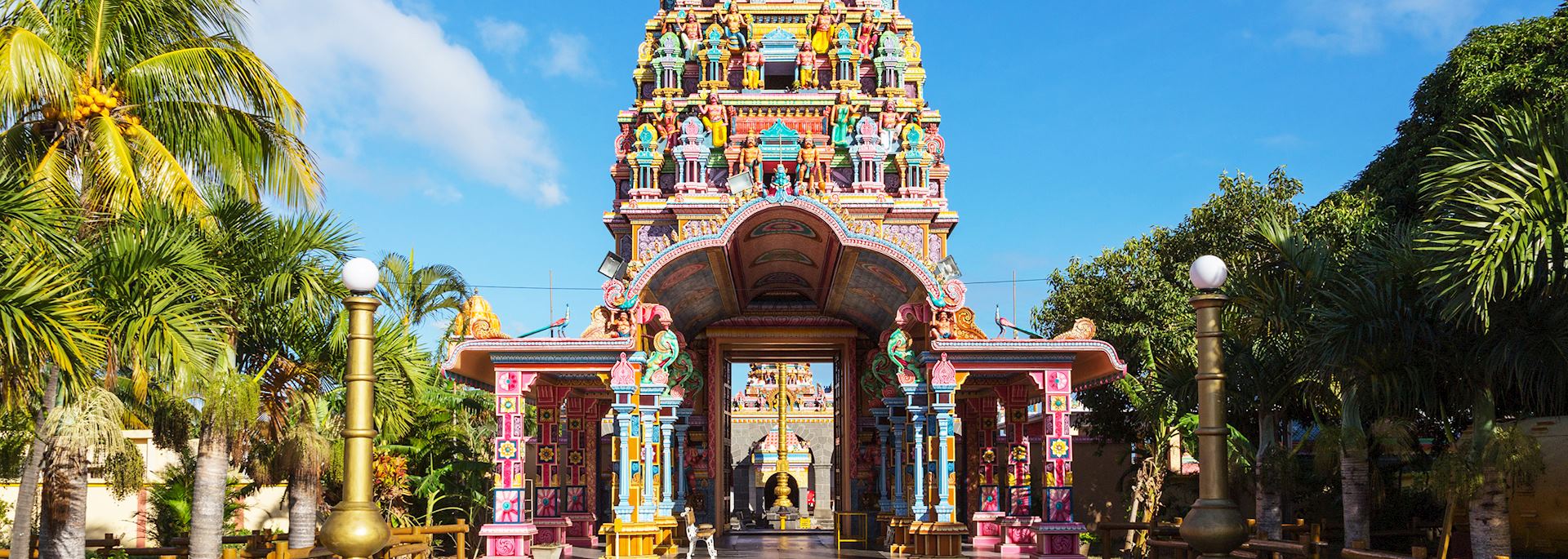Mauritius isn’t simply a beach destination. One of the key draws of the island is its rich heritage, from Indian culture brought over by late 19th-century indentured workers to a colonial legacy that brought tea plantations and sugar cultivation. It’s a small island so you can visit colonial homes, Hindu temples and rum distilleries within a day.
The best way to explore is with a car and driver. Your English-speaking driver can act as guide as you journey around the island, designing an itinerary around your interests and suggesting impromptu stops along the way. You can stop at the occasional roadside fruit stall for a fresh mango or a coconut — which will be expertly carved for you to drink from.
In the north of the island, L'Aventure du Sucre gives a thorough introduction to the history of sugar and how it’s shaped the island from the introduction of cane by the Dutch in the 17th century to modern rum production. It also examines the role that 60,000 slaves played in producing the island’s key commodity, and how this became woven in Mauritian social history.
Built in an old factory in the Beau Plan Sugar Estate, the museum is full of children-friendly interactive exhibits, a shop and demonstrations of the sugar process from cane to juice. Former factory workers are on hand to answer questions and a visit includes the opportunity to taste varieties of unrefined brown sugar, jams, honey and rum.
To learn more about rum production, Chamarel Rum Distillery in the south of the island is a small-scale factory that runs tours explaining the process in detail. Many of the colonial homes across the island are now open to visitors and also offer rum or tea tasting. The Chateau de Labourdonnais is one of the grandest, with pillars and wrap-around balconies, framed with well-tended gardens.
Quite a few colonial homes have been demolished but at Domaine des Aubineaux, a colonial manor house on the tea route, you can see a collection of photographs that document them. Part of the house had also been converted into a tea museum which recounts the development of tea plantations across the island. There’s also an opportunity to taste some of the brews.
While the tea and sugar industries have influenced the development of Mauritius, possibly the biggest influence to the island’s culture is the Indian workers who were brought to the island after slavery was abolished. Walk the streets of the island’s capital Port Louis and you’ll find Indian-inspired street food and as you drive across the country, you’ll see the brightly painted Hindu deities atop temples on the skyline.
Grand Bassin, a crater lake to the south of the island, is a focal point of Hindu worship, believed to be linked to the sacred Ganges River in India. The lake is signposted by a towering statue of Shiva (the third highest in the world). Wander among the series of shrines and statues and you might see devotees leaving offerings of fruit or lighting incense.
who's been there
-
01993 838 92501993 838 520
- Make an enquiry


